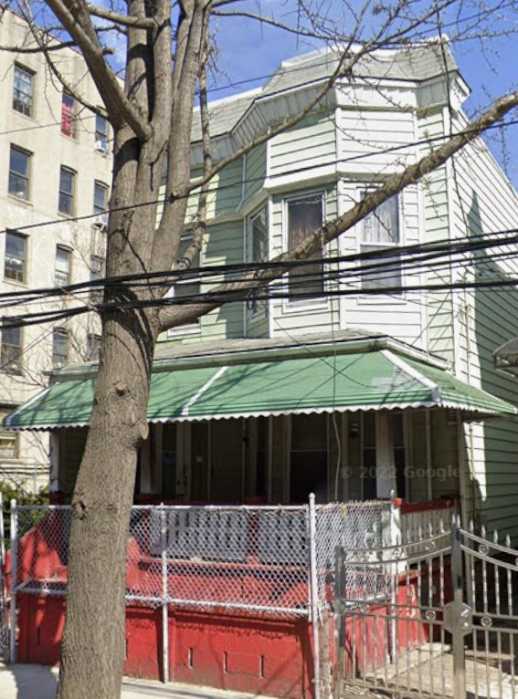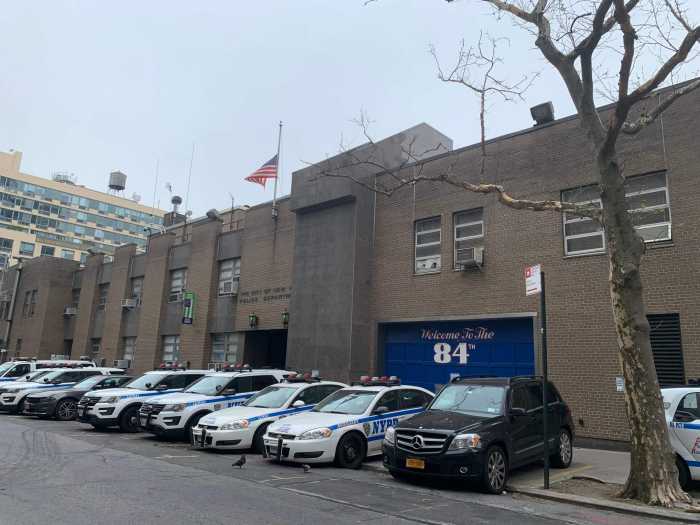By Chris Lombardi
Like many New Yorkers, writer-director Andrew Wilking had the pieces of his life figured out — mostly. He had a burgeoning video business, CrazyStudios.com. His son, Felix, was in a well-regarded primary school, strategically located between Wilking’s ex-wife in West Harlem and his West Village home office, where he deploys his skills with an assortment of help from neighbors at One Bank St., across from St. Vincent’s Hospital on Greenwich Ave. Sure, the apartment was market rate and thus expensive, and trekking up and down the island with Felix made for a hectic life. But on good days, the pieces fit together just right. Then, on Oct. 1, one of the pieces crumbled.
On that date, Wilking got a letter from his landlord. When Wilking’s lease expires on Dec. 31, it said, he and Felix would have to leave the apartment they had lived in for three years. The landlord, Lucky Bhalla, was converting the 90-year-old landmark to “corporate apartments.”
When Wilking asked if there was a way they could stay till the end of the year, so Felix wouldn’t have to switch schools, the management company said, “Well, we’ll give you till Feb. 1.”
Now, Wilking and other tenants are fighting back. On Nov. 14 at Judson Memorial Church on Bleecker St., the tenants will hold a public meeting with local elected officials and city representatives including Shari Hyman, director of the Mayor’s Office for Special Enforcement. Unlike most tenants who have raised the alarm about illegal hotels, this group is led by market-rate tenants, who have far fewer protections and, therefore, they told The Villager, nothing to lose.
“What can they do to me?” Wilking joked as a Villager photographer snapped a photo. “Throw me out?”
Albert Wilking, a three-year resident of One Bank St., in the hall outside his fourth-floor apartment.
The building’s lobby is a smooth-marble-and-glass marvel with anonymous art on the walls. But once the elevator opens, the landmarked building, built in 1915, begins to show its historic character in the irregular shapes of the apartments, the carefully painted original moldings and in the family atmosphere of the building, according to tenants.
Lisa Solanto (not her real name), one of the prime organizers of the Nov. 14 meeting, said that when her neighbor’s small daughter was learning to walk, “she was practicing going up and down the stairs. I left my door open, and she would come in. I’d say, ‘Let’s explore my cupboards!’ and ‘Would you like to try a caper?’ things like that. … We’ve really been a family here.”
When Solanto learned about Wilking, along with another neighbor who was told to move out — a neighbor whose father is critically ill and who, when he asked for more time, was given 30 days — she started researching ways to fight.
“I could leave,” said Solanto. “I could find another place. But then — who would take care of our 80-year-old neighbor, who just had heart surgery? What about my work community — like the makeup artist upstairs, who helps me out when I need it?”
A tour of the building included the shared basement level, with its open porch area and an informal gallery featuring former tenants’ artwork. Wilking, who had been talking a mile a minute about the landlord, his videos and his astrological sign, suddenly got very quiet, looking at the backyard trees.
“This is where we have the holiday parties, the celebrations,” said Solanto. “That back area — how many Fourth of July gatherings have we had here?”
In retrospect, tenants said, One Bank St.’s management had been less than upfront before now. For example, contrary to state law, tenants were required to pay the management company a “broker’s fee” just to get their apartments, even though the only brokerage involved was the landlord. Tenants also stated that they have never received any information about where their security deposits were being held, let alone a little check for interest, both of which are required by law. Wilking, who said his deposit is unusually large because of his irregular employment, laughed that in three years, “I’ve never received a single interest check.”
Management also treated the apartments themselves a little like rooms at a cheap hotel, said Solanto. She recalled what the landlord, who owns hotels in Palm Beach and elsewhere as well as an estate in Chandigarh, India, told her when she learned upon arrival that her one-bedroom had a stove but no counters.
“I said, ‘I have nowhere to put a cup of coffee,’ ” said Solanto. “He said, ‘Oh, miss, we New Yorkers are cosmopolitan! We do not make coffee at home. We go out for all our meals.’”
This past June, the building’s old lobby was destroyed, “with the landlord tearing out all our beautiful plaster moldings,” said Wilking, and new, anonymous faux marble installed. Solanto and the others started seeing unfamiliar faces in the elevator and the laundry room — the first transient visitors.
They learned that their building was listed with Signature Properties, a “furnished quarters” management company whose other illegal hotels include 455 W. 34th St. and the Atrium on 160 Bleecker St. Signature’s Web site cautions that all of its rentals are for a minimum 30-day stay — a legal loophole based on some very old Housing Court precedent, according to housing advocates — but it is actually easy to then book a room in those hotels for only three nights, on that very same site.
The Bank St. tenants contacted the Illegal Hotels Working Group, the citywide group of elected officials, city agencies and housing advocates working to stem the illegal use of residential buildings as tourist hotels. The first thing they learned was that the new “corporate apartments” fall into the muddy legal soup known as an “illegal hotel.” The second thing they found out was that because they were paying market rents, they had far fewer protections as tenants.
“These guys are a good example of the fact that just because you live in a market-rate apartment, it doesn’t mean you have a ton of money,” said Working Group co-founder John Raskin, a member of the nonprofit advocacy group Housing Conservation Coordinators. But compared to the complex braid of laws protecting rent-stabilized tenants, he said, “these tenants have relatively few avenues for redress.”
Fewer than half of the 2 million rental units in New York fall under the protection of rent-stabilization laws, and most of those were in existence when the current rent laws were first passed in 1974 or were specially funded affordable-housing units. In those apartments, tenants’ leases must be renewed (barring misconduct), rent increases are regulated and tenants have the right to raise complaints in court. But for the other 1 million-plus units, including those in older buildings like One Bank St. whose rents have surpassed $2,000, the legal terra firma is almost nonexistent.
“The market-rate tenants are in a much more precarious situation,” said Kevin R. McConnell, of the real estate law firm Himmelstein, McConnell, Gribben, Donoghue & Joseph. McConnell’s firm has successfully represented numerous such tenants: In May, McConnell won the right for tenants in The Sheffield, on W. 57th St., to stay in their apartments, even after the rest of the building was converted to condominiums. Housing Court Judge David Cohen said then: “The eviction or removal of a tenant in a building undergoing conversion, after acceptance of the plan, is prohibited.”
The firm is still working for a similar right for market-rate tenants at Manhattan Houses, on E. 66th St., as well as both market-rate and rent-regulated tenants at the Encore, a W. 53rd St. building that, in 2005, on its way to co-op conversion, became one of the earliest “Woogoo buildings” (featured on the notorious cheap-hotel site Woogoo.com).
At both The Sheffield and Manhattan Houses, McConnell added, a key element was the existence of powerful tenants’ associations, in which rent-regulated and market-rate tenants joined forces and made a lot of noise. Which is, of course, what the Bank St. tenants are starting to do.
All the city aides and advocates contacted for this article said they were working as hard as they could to come up with “creative solutions” to enable the Bank St. tenants to keep their homes. Some, like Raskin, are hoping that upcoming city legislation will resolve issues like the “30-day rentals” landlords at Bank St. are claiming to specialize in.
“Those rentals are not for people who plan to stay,” said Raskin. “You could have 30 tenants in 30 days.” Others hope to secure an outcome like that at the Sheffield, where the tenants were given the right to renew their leases.
“They’re doing this because they know that this is the Village, and that it is irreplaceable,” said Solanto. “They know that our kids grew up here, and that we make art. They know that on 9/11, we were the ones who started the blood bank at St. Vincent’s. When the next big thing happens in Manhattan, will a bunch of rich businessmen have the same commitment?”






































